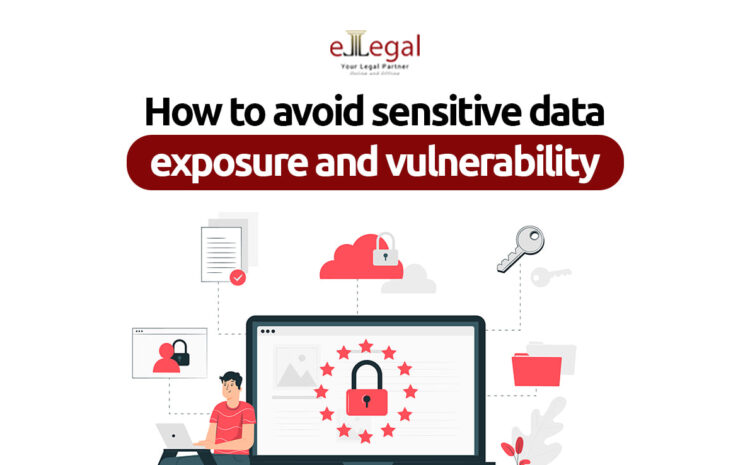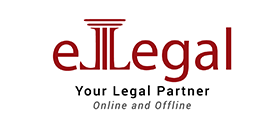
Data are held by numerous organizations in different places around the world today and such data ranges from the names and email addresses to social security numbers and banking information of data subjects. These data can be regarded as an asset and carry with it a serious liability with respect to protecting them. GDPR and other regulations require organizations to protect this data at all costs and avoid the exposure of sensitive information or risk facing fines for non-compliance.
Personal data is any information that relates to an identified or identifiable natural person, whereas non-personal data includes elements that do not have identifiability and uniqueness to a person. Sensitive Data, on the other hand, is any data that reveals an individual:
- Health data
- Biometric data
- Genetic data
- Data concerning a natural person’s sex life or sexual orientation
- Racial or ethnic origin
- Political opinions
- Religious, philosophical or political organization
- Religious or philosophical beliefs
- Trade union membership and more
What is Sensitive Data Exposure?
Anything that should not be accessible to unauthorized access is known as sensitive data which may include personally identifiable information (PII), such as Social Security numbers, financial information, or login credentials.
When an organization inadvertently exposes sensitive data or a security incident leads to the accidental or unlawful destruction, loss, alteration, or unauthorized disclosure of, or access to sensitive data it is to be said that sensitive data exposure has occurred.
Sensitive Data Exposure can be of the following three types:
- Confidentiality Breach: where there is unauthorized or accidental disclosure of, or access to, sensitive data.
- Integrity Breach: where there is an unauthorized or accidental alteration of sensitive data.
- Availability Breach: where there is an unauthorized or accidental loss of access to, or destruction of, sensitive data. This will include both the permanent and temporary loss of sensitive data.
Collecting sensitive data by organizations makes them responsible for its protection, and failure to do so will be non-compliant with the laws and may lead to fines.
Difference Between Data Exposure & Data Breach?
Data Exposure
Data exposure is when sensitive information is lost due to unintentional exposure as a result of an organization’s action—or lack thereof. This seldom occurs when online data is not adequately protected and encrypted, making it easier to obtain. Unknowingly uploading data to the wrong database or systems online are simple examples of data exposure.
Data Breach
When an authorized individual(s) gains access to a company’s or an individual’s data and this private information is compromised, stolen, or sold it is known as data breach. This is often occurs through security system flaws or human negligence. The most frequent reasons for data security breaches are as a result of human error.
How Can Sensitive Data Be Exposed
Anytime a company lacks security measures, data becomes vulnerable to exposure. Security teams must have an unambiguous understanding of the ways that data is vulnerable to exposure and put in place measures to improve mitigation techniques for potential application attacks.
When an organization does not sufficiently safeguard sensitive information from being exposed to attackers, sensitive data exposure vulnerabilities can appear.
It is frequently believed that neglecting to encrypt data is the most frequent error. The submission of a password in cleartext is one illustration of this vulnerability.
Attacks That Expose Sensitive Data
Ransomware Attacks
This is a type of virus known as ransomware, which encrypts files on the affected system. This malicious software is frequently integrated into devices using an attachment or link that consumers assume to be from a reliable source. Once clicked, ransomware downloads and decrypts data into unreadable code hackers use to demand a ransom.
Attackers send emails requesting money or information in exchange for the decryption key they control.
Phishing Attacks
Phishing attacks frequently trick users into thinking they are accessing or accessing a reliable website. Attackers disguise themselves as reputable and legal businesses and often reach out to targets through email or text messages.
Targets are tricked into divulging private information that criminals exploit to access their accounts and take their credit card information and other sensitive data.
Insider Threat Attacks
Insider threats typically include a current or former employee in a accompany and more often than not they pose a danger that all firms must contend with. Anyone working for the organization with access to private information could start a data breach by breaking in and taking confidential data.
How an Organization can Protect Itself From Data Exposure?
Assess Risks Associated with Data
The initial stages of data and access onboarding serve as gateways to potential exposure. Conducting a thorough assessment, continual change monitoring, and implementing stringent access controls for critical assets significantly reduces the risks of sensitive data exposure. This proactive approach marks the first step to achieving a strong data security posture.
Catalog Data
In order to protect their consumers data, organizations need to make sure they keep track of all the data stored within their systems and perform an audit. This will give them a clear picture of owners, locations, security, and governance measures enabled on the data.
Appropriate security controls
Organizations must have appropriate security controls in place to avoid the occurrence of sensitive data exposures as well as to limit their impacts on data subjects.
Instant Action
Organizations must have an effective breach response mechanism in place to immediately respond to sensitive data exposure.
Store Passwords Using Salted Hashing Functions
Securing databases, portals, and services hinges on safeguarding passwords. This prevents unauthorized access to sensitive data. It is crucial to handle password protection and storage with precision. Use advanced hashing algorithms for encryption and decryption. Adding an extra layer of security through multi-factor authentication strengthens the defense against potential breaches even more.
Fast and Effective Breach Response
Combatting data breaches demands a quick responsive approach. It’s often facilitated by widely adopted strategies. These include Data Detection and Response (DDR), Security Orchestration, Automation, and a host of others
Address excessive data exposure vulnerabilities
While these steps offer a great starting point, taking advanced measures will ensure your data is well protected. We recommend taking some advanced security measures.
Impact of Sensitive Data Exposure
Exposing sensitive data poses significant risks. It encompasses private details like health records, user credentials, and biometric data. Accountability, governed by acts like the Accountability Act, mandates organizations to safeguard granular user information. Failure to prevent unauthorized exposure can result in severe consequences. This can include identity theft and compromised user privacy. It can also lead to regulatory and legal repercussions and potential corruption of databases and infrastructure. Organizations must focus on stringent measures to mitigate these risks.
Conclusion
To avoid being vulnerable to attackers and risk exposing the sensitive data of your clients or customers, it is advised that you follow the above steps and put in place strict measures to avoid vulnerability, exposure of sensitive data, and fines.
We at eLegal Consultants can assist you with legal advice on how to protect data subjects and stay compliant with the necessary data protection laws. We are ready to journey with you to actualize your dreams. Contact us today.





